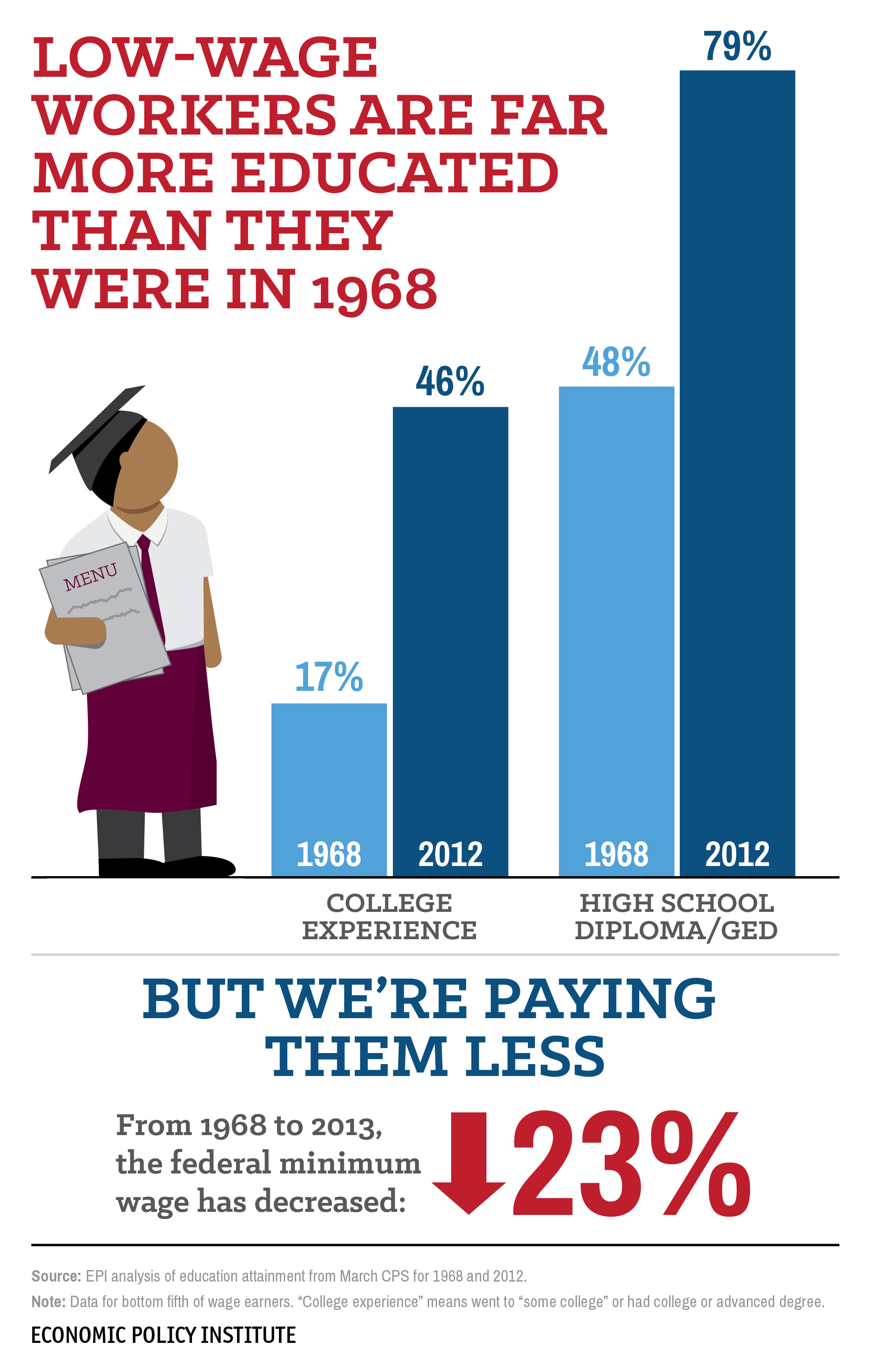The minimum wage is 23 percent less than its peak inflation-adjusted value in 1968. This is despite productivity (how much output can be produced in an average hour of work in the economy) more than doubling in that time period. The low-wage workforce has surely contributed to this rise in economy-wide productivity, since as a group they have far more education now than they did then. For the workforce overall, 37 percent in 1968 had not completed high school (or received a GED), which was true for only 9 percent in 2012 (the latest year with comparable data). We can drill down to examine low-wage workers, which we are defining for this analysis as those earning in the bottom fifth of the wage distribution.
The figure below shows that low-wage workers have far more education now than they did back in 1968. In 1968, 48 percent of low-wage workers had a high school degree, compared to 79 percent in 2012. Correspondingly, many more low-wage workers have attended at least some college or have a college degree, which the graph identifies as ‘college experience.’ While only 16.8 percent of low-wage workers in 1968 had gone to some college or had a college degree, that group had grown to nearly half (45.7 percent) by 2012. The bottom line is that minimum wage in 2013 is far less now than it was in 1968 despite the economy’s productivity more than doubling, and low-wage workers attaining far more education.

